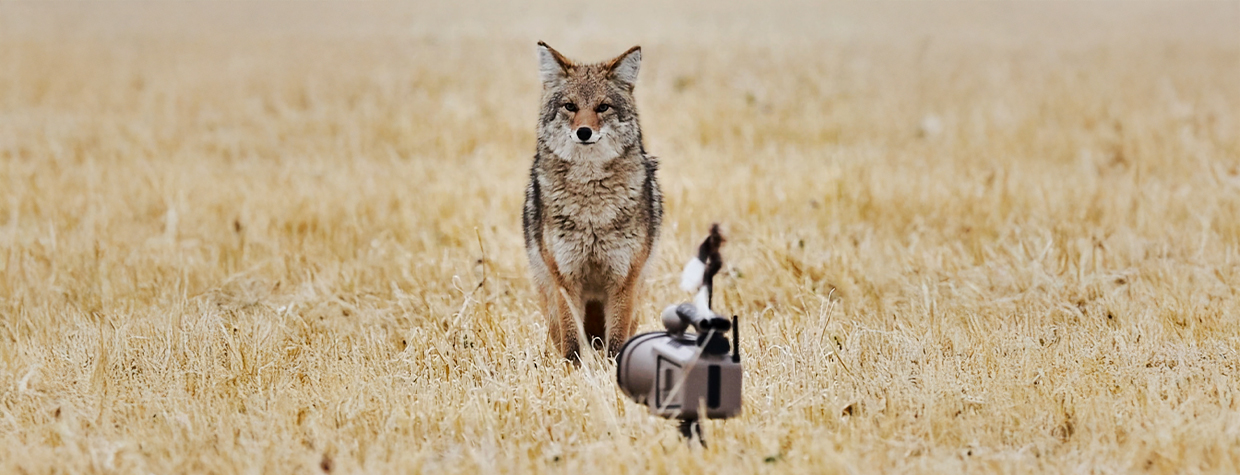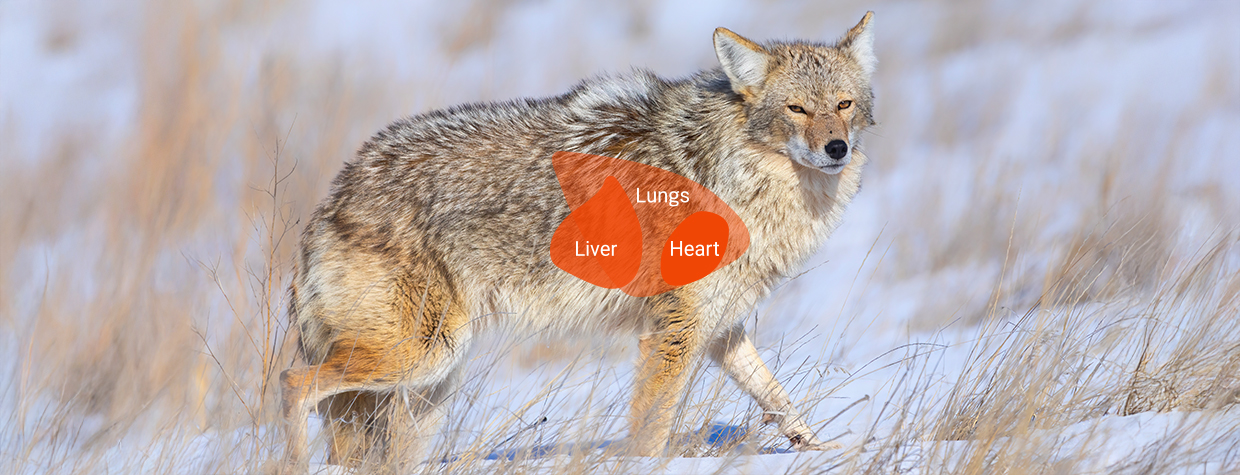Coyote Hunting Gear

Guide to Coyote Hunting Essentials
Big and small game hunters know that the success of a hunt hinges on instinct, gear and natural surroundings. Bass Pro Shops and Cabela’s Canada has everything from apparel, calls and decoys to firearms for your coyote hunting adventures.
Types of Decoys
When it comes to decoys, the very purpose of them is to attract the animal into close range and keep attention off the hunter and predator hunting decoys are no different.

Let’s get you started on tactics for hunting coyotes using decoys.
Types of Decoys
Prey Decoys
A decoy such as Lucky Duck Quiver Critter resembles an injured rabbit. This decoy produces realistic shakings and quivering, which helps in increasing coyote’s curiosity.
Tip: Decoys that look like an actual rabbit with or without movement paired with distress calls is a good setup for your hunt.
Coyote Decoys
Coyote decoys resemble a real coyote which triggers their natural territorial instinct. These realistic decoys lowers coyote’s defenses and helps in encouraging to move towards the decoy.
Tip: Pair this coyote decoy with shrill predator calls of distressed prey.
Coyote decoys can also be used during the breeding period to gain their attention.
Attachable Prey Decoys
Attachable prey decoys are made to be linked to an electronic call. Foxpro FoxJack 5 creates more movement with a chord like base that has fabric on the end to resemble an injured prey.
Attachable prey decoys can sometimes be run from a remote, allowing it to be turned on or off during a calling sequence.
How to Use Coyote Decoys
A decoy acts like a steering wheel in combination with the wind direction. Evaluate your surrounding terrain to gauge the predator’s most likely approach to your setup site.
Determine the wind
- Most coyotes approach with the wind in their face.
- Decide if you wish to aim your position where the wind is blowing, or with the wind in your face.
- With a setup blowing towards your shooting lane, set the decoy approximately 100 yards upwind, making sure you have ample shooting openings on either side.
- A predator may race in straight with its nose in the wind, but odds are high that it will approach from the side and circle. As it does, shoot before it hits the direct downwind alley.
- If using a decoy that is not attached to an electronic game call, place the decoy as close to the game call as possible to fool a coyote into thinking the sounds are coming from the movement of the decoy.
Make sure to spray the decoy down with a scent eliminator spray to prevent a coyote from spooking when approaching the decoy.
How to Call Coyotes: Howling & Distress Calls
Coyote calling is a game of vocal chess that involves, patience, perseverance and strategy. Different areas will yield better results with different calls. Understanding their habitat and setting up a calling sequence will help in bringing a coyote into your range.
- Call of the Wind: Be it decoy placement or coyote calling, predators tend to come in downwind and in most situations, they circle in downwind of their final approach. Ensure your setup can see your downwind side and if you are hunting by yourself, have an electronic call. This helps in setting the call upwind of your position and try to catch a coyote circling in downwind.
- Howling calls: There are various howling calls with each having its specific meaning. For instance, locator, pup howls, female invitation and interrogation can all bring in coyotes. However, during the breeding season, using female howls and interrogation howls works effectively.
Tip: If you get a response, try to mimic the same sound they are making. During the breeding season, many a time there might not be a howl back and yet you might call one in.
- Distress calls: Some of the most used distress calls are cottontail, rodent and woodpecker calls. Try and match the distress sound to the type of habitat in your surrounding area. If you are hunting in a rabbit habitat, use a rabbit distress call for a minute or two and then pause for 30-40 seconds. If called continuously for several minutes, it can make coyotes wary.
- Coyote calls: Coyotes are one of the most territorial animals and using coyote barks, yips, whimpers or other coyote sounds can trigger territorial instinct that makes them come charging in for the shot.
Command the Calling Sequence: Start off with howls and wait about 10 minutes and then begin distress calls. Make another 2-3 calls spanning about 5 minutes with the distress and wait around 10 minutes to repeat the call. If that doesn’t work, use a coyote pup distress call.
How to Achieve Success with Decoys & Calls
High-Pressure Areas
If there’s high hunting pressure, especially in public lands, calling a predator becomes tricky. As the coyote begins to hear multiple calling efforts, they become alarmed. If they come across human scent, it can make them suspicious of a hunter’s effort.
Calling coyotes become reserved when they come across hunters multiple times.
Often hunters face a situation where they have had coyotes come within an eyesight yet stay distanced enough to observe their surroundings before moving any closer. In times like this, having a decoy near the call gives the coyotes the guarantee and urgency to approach closer to investigate.
Terrain
Decoys work best in large, open terrains. When a coyote responds to a call, he is looking for something to eat. Adding a decoy can create realism and assure a coyote that the sounds are authentic. As a hunter place a motion-decoy or a realistic decoy to gain coyote’s attention.
However, when a coyote sees a movement resembling a bird or a rabbit, the urgency increases. Paying diligence will allow the hunter to get into a position that can yield a sure shot.
Tip: Ensure the decoy is placed at least 25 to 30 yards in front of you. If there’s too much space between the coyote and the call, the coyote could lose interest and become cautious.
Breeding Season:
From late January to mid-March, most coyotes across North America are in their annual breeding season. During this time, coyotes are looking for a mate and become even more territorial. Coyotes focus on breeding more than eating. Hunters can use coyote vocals in their calling sequences to help attract the breeding aspects.
Tip: Ensure the decoy is placed at least 25 to 30 yards in front of you. If there’s too much space between the coyote and the call, the coyote could lose interest and become cautious.
Dress for Success: Coyote Hunting Apparel
Coyotes are wary animals and as a smart hunter, it’s critical to blend into your surroundings and not give out any silhouettes. With the right apparel, you can stay comfortable and blend into the nature without a worry.
Understanding Coyote Anatomy & Shot Placement
